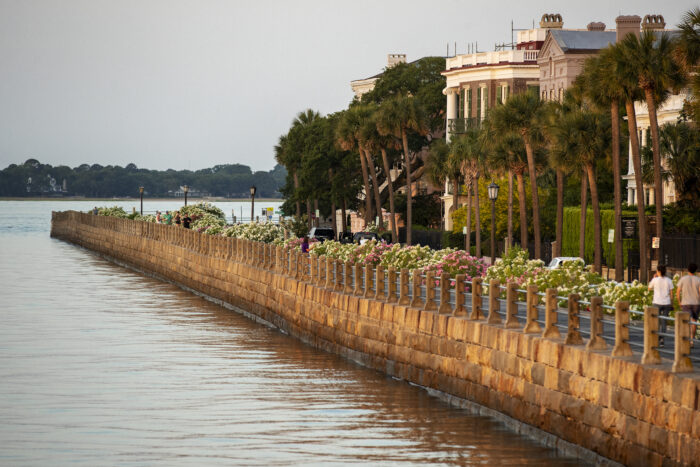Building climate adaptable communities
From the expert.
A message by SELC’s Climate Initiative Leader Alys Campaigne.
The South is already feeling the effects of climate change — from sunny day flooding to intense heat — but historic federal climate investments are turning the tide on how communities can prepare and adapt to this changing climate.
In 2022, the federal government passed the Inflation Reduction Act, providing Southern communities with an unprecedented opportunity to combat climate change on our own terms. One year later, SELC and our community partners are making strides to address the South’s climate challenges, from heat and flooding to air pollution and sea level rise.
“The climate emergency calls on us to be really specific about how we protect and involve communities in solutions that work for the challenges facing them,” says SELC Climate Initiative Leader Alys Campaigne. “The Inflation Reduction Act and other major federal investments are a tremendous lever to propel the South forward and deliver on meaningful climate solutions.”
How is the climate crisis affecting Southern communities?
The South is on the front lines of the climate crisis. Its impacts look like polluted water supplies, high energy bills and power outages, routine extreme flooding and storms, heat waves, stresses on farm and forestland, and displacement of wildlife.
In 2021, a summer storm system unleashed over 15 inches of rain on communities outside of Nashville in a single weekend, and more than 270 homes were destroyed in this storm alone. Along the coast, sea level rise is already disrupting daily life and pushing tides into coastal communities. Last year in Charleston, the tide came high enough to cover normally dry ground 70 times, blocking streets and movement around the city, including within the hospital district. And higher seas mean a higher launching point for storm surge and stormwater, meaning some areas that didn’t used to flood will begin to feel the effects of climate change.
Navigate our changing coast in the wake of sea level rise.
What is the Inflation Reduction Act?
While we face a daunting challenge, we also have significant opportunities to shape progress. In August 2022, the federal government passed the Inflation Reduction Act, our nation’s largest-ever investment in fighting the climate crisis. This investment provides a huge opportunity for Southern communities to drive meaningful climate change initiatives in our own backyards.
Using these funds, SELC and our community partners are working together to strategically address the South’s major climate problems.
I am hopeful that we can take this transformational federal investment and translate it into projects that bring tangible benefits to the South.
Alys Campaigne, Climate Initiative Leader
The IRA is bringing new clean energy businesses to our states, creating new jobs, replacing dirty cars and buses with clean, electric alternatives, and making solar energy and energy efficient equipment more available and affordable. Innovative financing programs enable local community organizations, hospitals, churches, and schools to receive funding to install solar panels, heat pumps, EV charging equipment, and other energy saving equipment — rather than waiting on monopoly utility companies to deliver clean power.
The law’s emphasis on including and addressing the needs of communities that have borne the brunt of pollution and environmental injustice is also transformational. Grants have been awarded to support community-led climate mitigation and resilience plans. Inclusive planning will ensure that investments meet local needs.
Providing adaptable solutions in Charleston
Charleston and surrounding coastal South Carolina cities are already putting those dollars to use by identifying and addressing their most significant sources of climate challenge.
Poor development choices along the coast cause the destruction of coastal wetlands. In turn, this loss of flood-resistant resources leads to climate challenges like tidal surges, rising water tables, and contaminated drinking water. Reviving natural ecosystems is both a sustainable and inclusive way to combat the climate emergency.

On the coast of Charleston, where a large and expensive sea wall project is proposed, restoration efforts are underway to install small oyster shell island hammocks that provide an anchor for seagrasses to grow. The resulting islands stop seawater from flooding nearby communities and also provide a nesting habitat for shorebirds.
Federal funds are also being put to good use by identifying highly polluted areas at risk of extreme flooding and coastal erosion. Charleston area neighborhoods are collecting data on nuisance flooding hot spots and building buffers and rain gardens to better manage runoff. At the most basic level, resources for data collection help target hot spots, meaningfully inform coastal risk assessments, and prioritize resource needs.
Funds are also available to assist low and moderate income households on the coast to address failing septic systems.
Campaigne’s outlook is optimistic: “I am hopeful that we can take this transformational federal investment and translate it into projects that bring tangible benefits to the South.”
